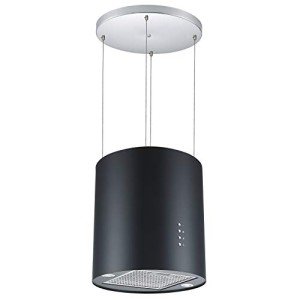How to Ventilate an Island Vent Hood
Suspended from the ceiling, an island vent hood assists distribute air and keeps your kitchen totally free of smoke and odors. It's also an elegant function that enhances your cooking space.
Ventilation types include external venting, which presses air through ductwork to the beyond your home, and recirculating models that filter and recycle cooking fumes. Some hoods can even be converted between one and the other.
Ventilation
Unlike wall-mounted range hoods that vent air vertically through the wall to the outside, island vent hoods utilize ductwork that goes through the ceiling to exhaust the cooking location to the outdoors. The distinction is that they can likewise be utilized to recirculate air.
Discover our choice of commercial and designer customized hoods with effective ventilation systems. With adjustable specs, find the ideal hood for your kitchen area.

Dacor's ConnectOn auto-responsive technology turns on the hood and increases the fan speed in action to the cooktop, supplying powerful performance while using minimal noise. It's just another way that you can cook with confidence. Include a touch of contemporary with this stainless-steel pyramid-style wall-mount canopy hood. This hood gracefully accentuates sophisticated cooking areas that follow a more traditional design style and clears the air of smoke, steam and cooking odors.
Design
Unlike wall-mounted range hoods that are mounted against the wall, island vent hoods are suspended from the ceiling over an island or peninsula cooktop or range. They also use ductwork to exhaust air out of the home. This design is ideal for kitchens that have a great deal of open area, and it helps to include visual interest to your space. This new home features Blackberry stained cherry cabinets on the criterion, and a natural stacked stone on the island and vent hood to complement the Gunstock stain on the cabinets. 10ft ceilings and a skylight help to keep the kitchen intense and large.
Sound
While island hood extractor does a fantastic task of filtering smoke, grease and odors out of your kitchen, it can also create some noise that disrupts the tranquility of your cooking space. Fortunately, there are some strategies you can employ to lower this sound and permit you to cook in peace.
One of the primary causes of excess range hood sound is brought on by fan motor problems such as stiff bearings or improperly lubricated fans that produce a loud humming sound. Ductwork can also contribute to this problem especially if the ducts are too small or if they are clogged with dust.
The best method to lessen noise is to ensure that your vent hood has the greatest airflow score that you can pay for. The Home Ventilating Institute (HVI) recommends an air flow rate of 100 to 250 cfm for wall-mounted hoods over 30-inch wide stoves. This hood must likewise have a multispeed fan to permit lower fan speeds during light cooking. Among the most basic ways to reduce the noise is to make sure that the ducting is smooth-walled, as corrugated duct restricts air flow. You need to also keep the duct runs as short and straight as possible to avoid any kinking.
Setup
Ventilation of island range hoods is a various process than wall-mounted systems, since they are suspended from the ceiling over an island or peninsula cooktop or range. They normally need a duct that goes through the ceiling and out through the roofing system, which can be a complex task for an unexperienced homeowner.
In addition, they should be set up a minimum of 24-inches to 36-inches above the cooking surface area. The height may differ, depending upon the size of the hood and the ceiling. If you have existing ducting and electrical circuitry in the kitchen ceiling, this type of vent hood is fairly easy to set up. If not, it's advised that you seek advice from an expert.
To start installation, ensure the hood can fit through the opening you have actually selected for the vent and that it's the right width to accommodate the ductwork and exhaust. If island extractor hoods is too wide, it can lessen the effectiveness of the vent and will increase noise levels. Next, cut a small hole in the ceiling and utilize a wire cutter to check that there's no pipes or electrical wiring near the hole. If there is, consider employing an expert for the job or changing to a recirculating system.
If there isn't, you can start the bigger vent hole by drilling locator holes with a drill and a 1/2-inch masonry bit in each corner of the place. Then utilize a jigsaw to cut the larger vent hole. Lastly, include a drywall patch and paint to finish the task. As soon as the hood is in place, you can run the electrical circuitry and link it to your breaker box. Follow your maker's guidelines for complete installation details.
